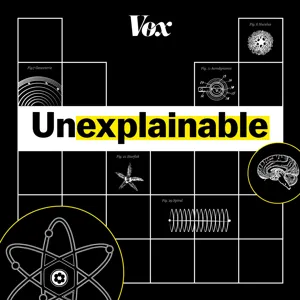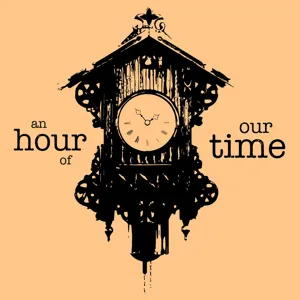Podcast Summary
Apple Card's daily cashback vs celestial impacts: Apple Card offers daily cashback, while celestial objects remind us of the unpredictable universe, and State Farm Insurance provides personalized coverage for small businesses.
Apple Card offers daily cashback of up to 3% on purchases, which can be grown at a 4.50% annual percentage yield when you open a savings account. Meanwhile, in the realm of science, the impact of celestial objects on planets is a serious concern. In 1994, scientists witnessed a comet heading towards Jupiter, resulting in an epic moment where multiple pieces slammed into the planet, creating a significant plume. While the Apple Card's savings account may bring financial rewards, the impact of celestial objects serves as a reminder of the dynamic and unpredictable nature of the universe. State Farm Small Business Insurance, on the other hand, offers personalized policies for small business owners, ensuring they are covered by someone who understands their unique needs. In both cases, it's essential to be prepared for the unexpected.
Near-miss comet collision on Jupiter sparks funding increase for NASA asteroid detection: NASA receives increased funding to locate and monitor asteroids that could threaten Earth, using telescopes to detect moving objects, but it's a challenging task due to limitations and some asteroids' faintness, darkness, or opposite position from Earth's view.
A near-miss comet collision on Jupiter served as a wake-up call for the potential danger of asteroids and comets threatening Earth. In response, Congress increased funding for NASA to locate and monitor any large objects that could pose a threat. Scientists use telescopes to detect these moving objects by identifying points of light that don't align with the fixed stars. However, it's a challenging task due to the limitations of telescope capabilities and the fact that some asteroids may be too faint, dark, or on the opposite side of the sun from Earth's view. The goal is to find and deflect or destroy any potential threats before they reach our planet.
Asteroids follow their own orbits around the sun: NASA identifies most large asteroids threatening Earth within 100 years, but countless smaller ones remain undiscovered, making asteroid impacts a continuous concern
Asteroids are not just random space rocks moving in a straight line, but rather they follow their own orbits around the sun. While some may pass close to Earth, predicting their paths and potential impacts requires continuous monitoring and observation. NASA has identified over 95% of the large asteroids that could pose a threat to Earth within the next 100 years, but there are still many smaller asteroids that remain undiscovered. The number of asteroids yet to be found can be estimated by the rate of discovery, similar to fishing in a pond and tagging the fish caught. However, even if all large asteroids are identified, the presence of countless smaller asteroids means that the threat of asteroid impacts remains a significant concern.
Finding the remaining 60% of large asteroids: NASA is working to discover all large asteroids that could cause catastrophic damage to Earth by launching a space-based telescope and is expected to find them all within 30 years. Smaller asteroids can also cause significant damage and should not be overlooked.
While NASA has found about 40% of medium-sized asteroids that are 140 meters and larger, there is still a concerning amount that needs to be discovered. These asteroids, sometimes referred to as "city killers," could cause huge catastrophes if they hit Earth. NASA is working on finding the remaining 60% through various methods, including launching a space-based telescope called the Near Earth Object Surveyor in 2026. However, it is expected that all of these asteroids will be found within 30 years. It's important to note that smaller asteroids, even those as small as 20-40 meters, can also cause significant damage. For instance, a meteor that exploded over a city in Russia in 2013 caused injuries and damage to buildings, despite being less than 20 meters in size. Therefore, it's crucial to continue efforts to find and monitor all potential asteroid threats.
Unexpected asteroid impacts can cause significant damage: Though the odds of a city-killer asteroid impact are low, the potential consequences are catastrophic. We must remain vigilant and invest in asteroid detection and deflection technologies to minimize the risk.
Medium-sized asteroids, like the one that narrowly missed Earth in 2019, can come unexpectedly and cause significant damage. Despite advancements in technology and space exploration, scientists often have no warning when these asteroids approach. The odds of a city-killer asteroid impacting Earth are low, but the potential consequences are catastrophic. Currently, there is no proven method to deflect an asteroid, and scientists are still experimenting with potential solutions. It's crucial that we remain vigilant and continue investing in asteroid detection and deflection technologies to minimize the risk of future impacts.
Testing the 'boop' method to change an asteroid's orbit: NASA's DART experiment involves ramming a spacecraft into an asteroid to observe the effects and determine if this method can change its orbit, offering a more controlled approach compared to nuclear weapons.
When it comes to dealing with potentially hazardous asteroids heading towards Earth, the simple yet elegant solution may be to nudge them off course rather than using dangerous methods like nuclear weapons. NASA's Double Asteroid Redirection Test (DART) is an ongoing experiment that involves ramming a spacecraft into an asteroid to observe the effects and determine if this method can change an asteroid's orbit. This "boop" on the cosmic scale is a more controlled approach compared to the destructive consequences of nuclear explosions. The asteroid chosen for this test is a small one that orbits a larger asteroid, making it accessible for observation. While the impact may not be as small as a mere "boop," it is a significant step towards understanding and mitigating the potential threats posed by asteroids.
NASA's DART mission: Changing an asteroid's orbit by crashing a spacecraft: NASA's DART mission aims to prove asteroid deflection is possible by crashing a spacecraft into a moonlet asteroid, potentially paving way for future protection against hazardous space rocks.
NASA is currently attempting to change the orbit of a moonlet asteroid named Dimorphos, which orbits a larger asteroid, by crashing a spacecraft named DART into it. This mission, the first of its kind, aims to prove that altering an asteroid's trajectory is possible, potentially paving the way for future deflection attempts against larger, potentially hazardous space rocks. DART, a box-shaped spacecraft equipped with solar panels, is scheduled to collide with Dimorphos at 24,000 kilometers per hour later this year. The goal is to change Dimorphos' orbit by at least 73 seconds. However, challenges include the asteroid's unknown shape and the uncertainty of the collision's outcome. If successful, this mission could mark a significant step forward in protecting Earth from potential asteroid impacts.
Understanding asteroid deflection with DART mission: The DART mission could provide insights into asteroid deflection techniques and potentially lead to advanced detection and deflection strategies, emphasizing the importance of early asteroid identification and preventative measures.
The upcoming DART mission to deflect an asteroid is significant because it could answer crucial questions about the effectiveness of asteroid deflection techniques, and potentially help us prepare for future asteroid threats. However, there are uncertainties, such as the asteroid's internal structure and density, which could impact the outcome. Even if the asteroid shatters upon impact, it might not be a bad result, as it could suggest a gentler approach to deflection. If successful, the DART mission could lead to more advanced asteroid detection and deflection strategies, giving us valuable time to prepare for potential asteroid threats in the future. The key is to identify asteroids early and take preventative measures, such as sending precursor missions to study them before implementing deflection techniques. Overall, the DART mission represents a crucial step forward in our understanding of asteroid deflection and our ability to protect Earth from potential threats.
Dart mission: A historic achievement for humanity: The Dart mission represents a potential historic achievement for humanity, showcasing intergenerational problem-solving and scientific cooperation, which could save potentially billions of lives from asteroid impacts.
The Dart mission, which aims to deflect an asteroid from colliding with Earth, represents a potential historic achievement for humanity. By preparing for future pandemics and natural disasters, including asteroid impacts, we can save lives in the future. While we may not live to see the success of this mission, the intergenerational approach to problem-solving and scientific cooperation could lead to the protection of the planet and the saving of potentially billions of lives. The Dart mission is a testament to human scientific know-how and international cooperation, and could be hailed as one of the greatest human achievements if it successfully deflects a city-killer asteroid in the future.





